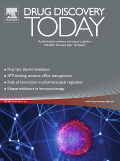“In ancient medicine, extracts of the marijuana plant Cannabis sativa were used against diseases of the gastrointestinal (GI) tract.
Today, our knowledge of the ingredients of the Cannabis plant has remarkably advanced enabling us to use a variety of herbal and synthetic cannabinoid (CB) compounds to study the endocannabinoid system (ECS), a physiologic entity that controls tissue homeostasis with the help of endogenously produced CBs and their receptors.
After many anecdotal reports suggested beneficial effects of Cannabis in GI disorders, it was not surprising to discover that the GI tract accommodates and expresses all the components of the ECS.
Cannabinoid receptors and their endogenous ligands, the endocannabinoids, participate in the regulation of GI motility, secretion, and the maintenance of the epithelial barrier integrity.
In addition, other receptors, such as the transient receptor potential cation channel subfamily V member 1 (TRPV1), the peroxisome proliferator-activated receptor alpha (PPARα) and the G-protein coupled receptor 55 (GPR55), are important participants in the actions of CBs in the gut and critically determine the course of bowel inflammation and colon cancer.
PURPOSE:
The following review summarizes important and recent findings on the role of CB receptors and their ligands in the GI tract with emphasis on GI disorders, such as irritable bowel syndrome, inflammatory bowel disease, and colon cancer.”










